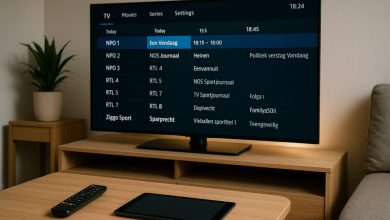How Managed IT Services Are Bridging the Gap Between Technical Support and Cybersecurity

Businesses often juggle two major tech headaches at once: keeping their systems running and protecting them from cyber threats. When something breaks, IT support gets the call. But what happens when that “something” is a targeted attack or serious data breach? This gap between helping users and securing systems leaves many businesses feeling stuck. Here’s the good news: managed IT services bring both technical assistance and cybersecurity together in one place. By monitoring networks, solving issues quickly, and preventing attacks before they occur, these providers address both sides of the problem.
Ready to learn how this approach can protect your business? Keep reading!
The Role of Managed IT Services in Modern Businesses
Modern businesses depend on Managed IT Services to simplify and secure their operations. These services reduce downtime by managing IT infrastructure and offering immediate technical support. They ensure systems operate effectively, minimizing interruptions that waste time and resources.
Managed service providers prioritize cybersecurity alongside traditional IT management. They continually monitor networks, identifying threats before they develop further. By merging risk management with system maintenance, they safeguard sensitive data while enhancing efficiency. Businesses benefit from dependable technology solutions without overwhelming internal teams.
Key Technical Support Functions of Managed IT Services
Managed IT services simplify technical challenges by resolving issues proactively. They enable businesses to maintain progress without frequent interruptions or downtime.
Proactive system monitoring
IT teams continuously examine networks, servers, and devices to catch issues early. Automated alerts help identify irregular activities like performance drops or unauthorized access attempts. This reduces downtime and prevents costly failures.
Early detection is the key to avoiding major disasters. By tracking hardware usage and software health, businesses can avoid unexpected disruptions. Regular monitoring also supports better IT management by providing data insights for well-informed decisions.
Streamlined incident management
Managed IT services respond swiftly to issues, reducing downtime.For example, businesses that require both remote and on-site support with Complete Network benefit from faster issue resolution without relying solely on internal resources. They use sophisticated tools like automated alerts to detect and address problems promptly. By resolving incidents faster, they ensure systems operate efficiently. Transparent communication during an incident fosters trust with clients. Teams focus on critical events while ensuring less pressing matters are addressed promptly. This mitigates risks and supports business continuity effectively.
Core Cybersecurity Capabilities in Managed IT Services
Cyber threats don’t wait, and neither should your defenses. Managed IT services enhance security measures to keep risks at bay while supporting business goals.
Threat detection and response
Threat detection identifies risks like malware, phishing attempts, or unusual activity in a system. Managed IT Services use sophisticated tools to monitor networks for suspicious behavior. AI-powered solutions help spot threats faster than human teams alone. Skilled analysts stay ready to respond and neutralize attacks before they cause damage. This approach reduces downtime and keeps business operations steady.
Responding quickly is vital to limit security breaches. Managed providers create clear response plans customized to each client’s needs. These plans outline steps for isolating threats, restoring data, and protecting systems from repeat attacks. As one expert notes: A strong threat response saves companies precious time and resources.
Data protection and compliance
Strong data protection practices shield businesses from costly breaches. Providers like IT secured by ddsystems.com demonstrate how advanced encryption, compliance monitoring, and access controls can fortify businesses against evolving digital threats. Managed IT Services incorporate encryption, secure backups, and robust access controls to protect critical information. These measures help protect sensitive customer data while minimizing exposure to cyber risks. Compliance with legal standards like GDPR or HIPAA is also essential for avoiding fines or reputational damage.
IT providers frequently audit systems to confirm adherence to regulations. They monitor changing laws and adjust processes accordingly, removing uncertainty for businesses. Automatic updates and compliance reporting tools simplify meeting industry requirements without interrupting daily operations. This forward-thinking approach keeps companies strong in a constantly changing digital environment while maintaining trust with clients.
Technical support and cybersecurity often worked separately, but that’s changing fast. Managed IT services integrate these areas to safeguard systems while addressing issues efficiently.
Integration of ITSM with cybersecurity frameworks
ITSM tools simplify connecting traditional IT support with cybersecurity frameworks. Features like incident tracking and asset management align effectively with threat detection systems. This integration allows teams to respond promptly to potential risks while maintaining clear processes. Managed services providers often connect response protocols directly into ITSM platforms. Doing this minimizes delays during security breaches or system failures. Next, let’s examine how improved collaboration between IT and security teams enhances efficiency.
Enhanced collaboration between IT and security teams
IT and security teams often work independently, leading to gaps in communication. Managed IT services help connect these divides by encouraging direct collaboration through shared tools and workflows. For instance, combined ticketing systems allow both teams to track incidents together, reducing delays during critical responses.
Regular joint training sessions also strengthen trust between departments. IT staff gain knowledge on identifying potential threats early, while security professionals learn more about operational technology challenges. This alignment ensures quicker resolutions and minimizes downtime for businesses.
Benefits of Unified Managed IT Services
Unified managed IT services save businesses time and reduce stress. They combine technical support and cybersecurity for more efficient operations.
Improved operational efficiency
Managed IT Services reduce downtime by resolving issues before they grow. Automated system monitoring identifies irregularities, ensuring IT infrastructure operates efficiently around the clock. IT Support teams improve efficiency through streamlined workflows and quicker response times. Combined solutions merge Technical Assistance with Cybersecurity measures, lowering risks while maintaining steady operations.
Reduced risk of cyber threats
Strong operational processes also contribute to better cybersecurity. Managed IT Services provide continuous network monitoring and real-time threat detection, minimizing vulnerabilities before they become bigger issues. This method prevents cyberattacks right at the start, maintaining the safety of systems.
IT teams enforce strict access controls and encryption methods. They make sure sensitive data remains secure from unauthorized access or breaches. Frequent updates and patch management further lower risks, addressing weaknesses in outdated software.
Conclusion
Managed IT services are bridging the divide between tech support and cybersecurity. They merge rapid problem-solving with robust defenses against threats. This collaboration ensures systems operate smoothly and data remains protected. Businesses achieve greater efficiency, reduced downtime, and enhanced security. It’s an effective approach to maintaining safety and productivity.


